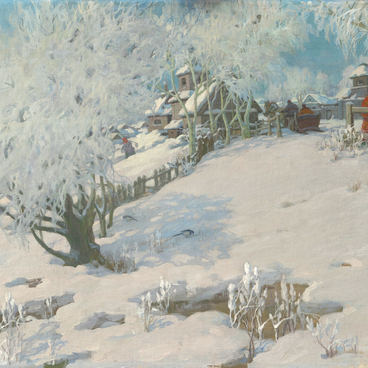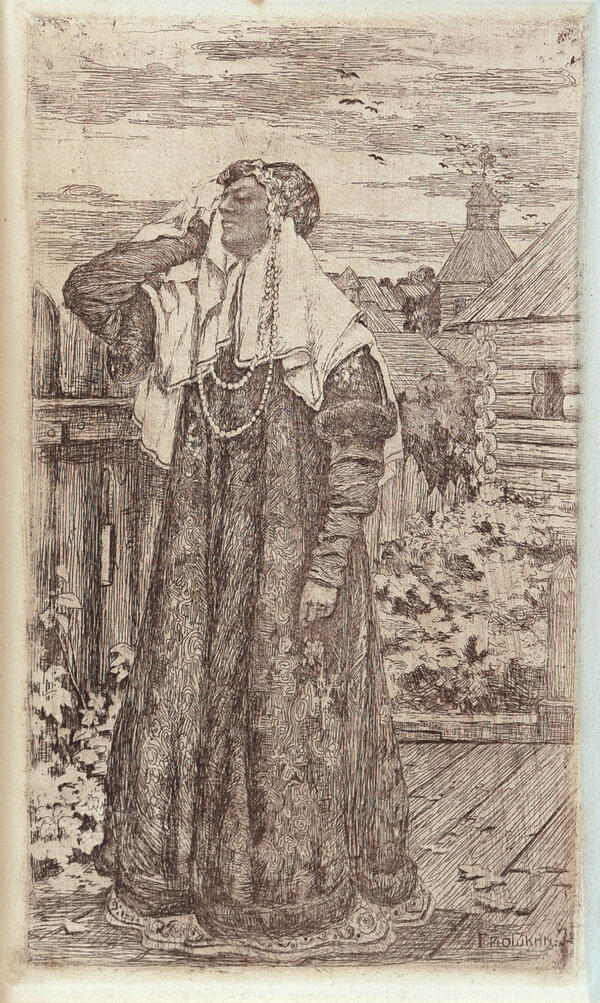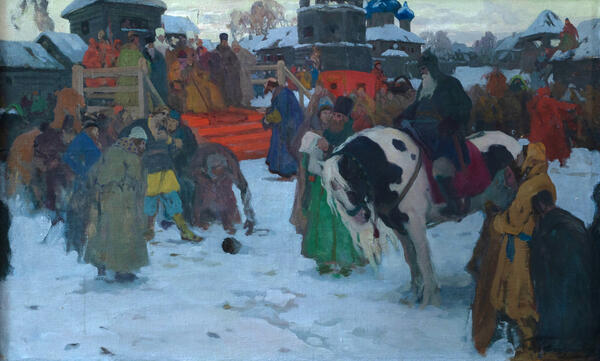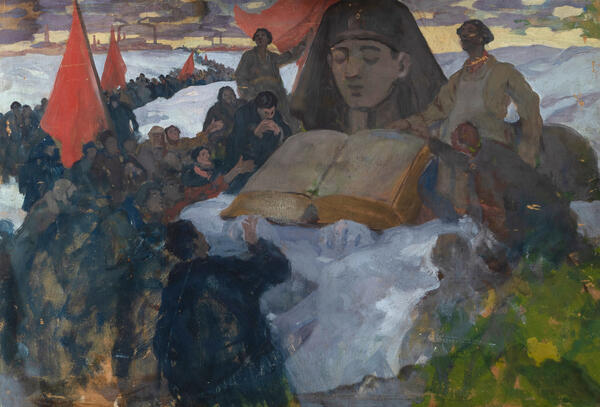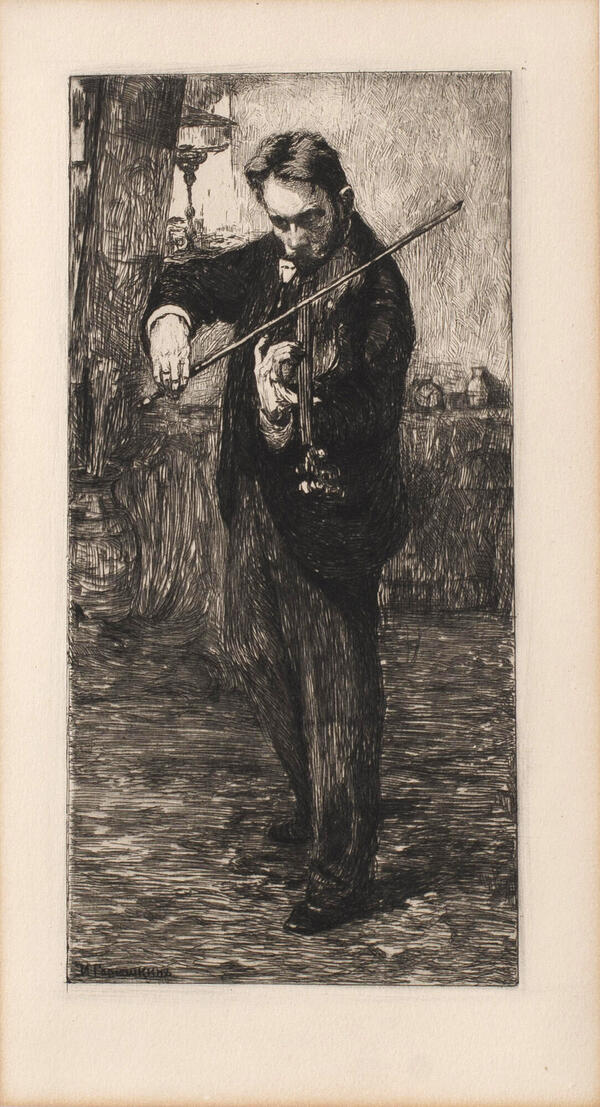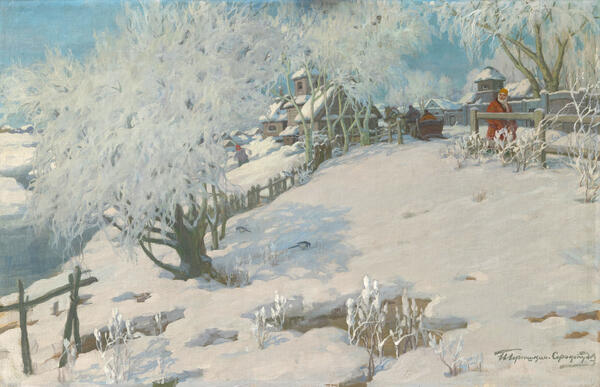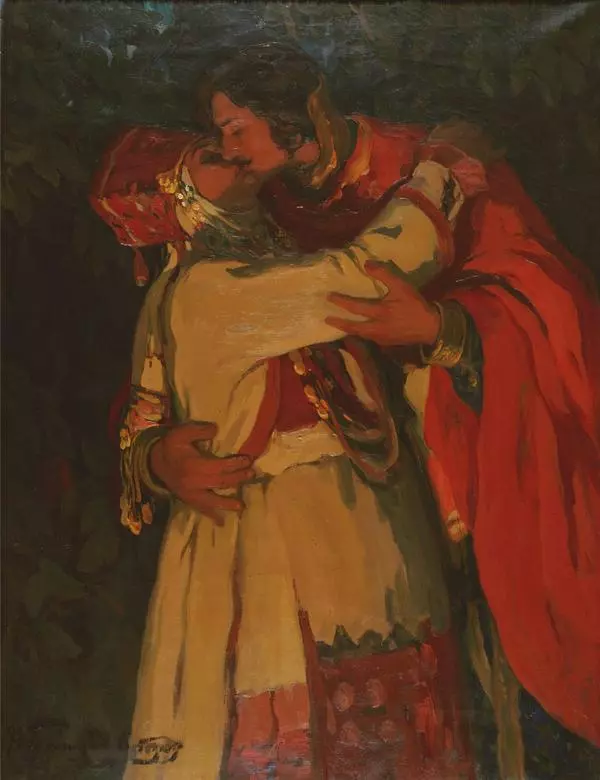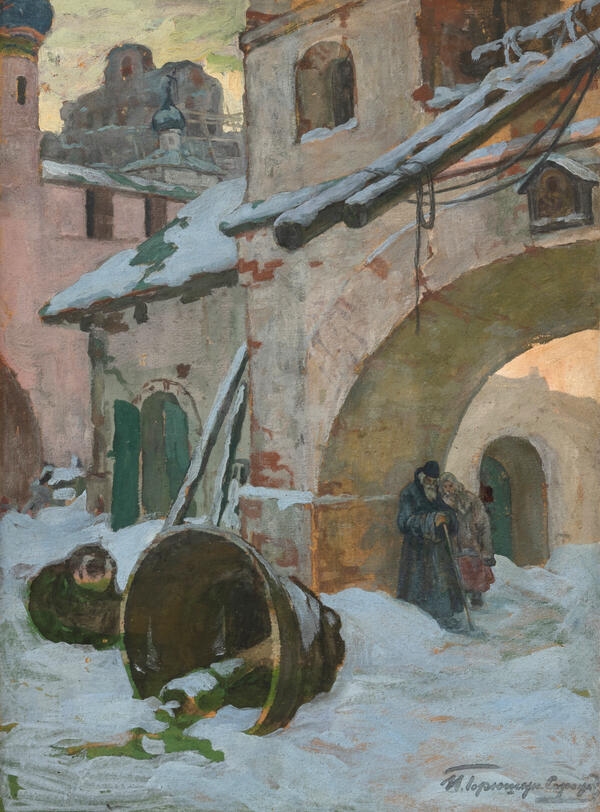In his art, Ivan Silych Goryushkin-Sorokopudov often explored the image of Russia during the times of Ivan the Terrible and Boris Godunov. Having visited Uglich, Rostov Veliky, and other ancient Russian cities on many occasions and stayed there for a long time, the artist gathered a lot of impressions and studies that he later used in his paintings.
In his paintings, Ivan Goryushkin-Sorokopudov celebrated the Russia of the past with its domes of Orthodox churches, the intricate architecture of wooden houses, and the people — Prince Igor and his wife Yaroslavna, calling from the walls of ancient Putivl. The artist was interested in depicting seemingly mundane everyday moments in historical scenes, and not focusing on any specific events. He strove to capture the slow pace of life typical of the past. This is evident in his painting “A Scene from the 17th Century”.
Having moved from St. Petersburg to Penza in 1908, Ivan Goryushkin-Sorokopudov visited nearby villages and towns, carefully observed the life and customs of the Mordvins, Tatars, and Chuvash people, studied and sketched their national costumes and household items. It was in Penza that he created his most prominent works — “Market Day in an Old Town”, “The Judgment of God”, and many others.
Ivan Goryushkin-Sorokopudov named several of his works “A Scene from the 17th Century”. He was greatly inspired by his move to Penza, a city that was founded during that period.
In this painting, life seems to run its course. The town is quiet and peaceful unlike in another painting, “Market Day in an Old Town”. The artist created such works in the 1910s–1930s. It seems as if he was trying to escape the horrors of his time and find a safe harbor in the world of the past.
The artist placed great emphasis on the landscape. A street covered with bluish snow and thawed areas stretches from the foreground into the distance, across the entire width of the canvas. In the background, on the left side, the artist showed a high wooden fence with a half- open door and a gate.
Near the wall, there are figures of a man and a woman who greet the man passing by on a red sled. On the right, a low wooden fence runs along the edge of the street. Behind this fence, the terrain slopes downward, revealing another part of the town in the distance. There are also figures of men in caftans and women in green clothes. The artist completed his work in 1934.

